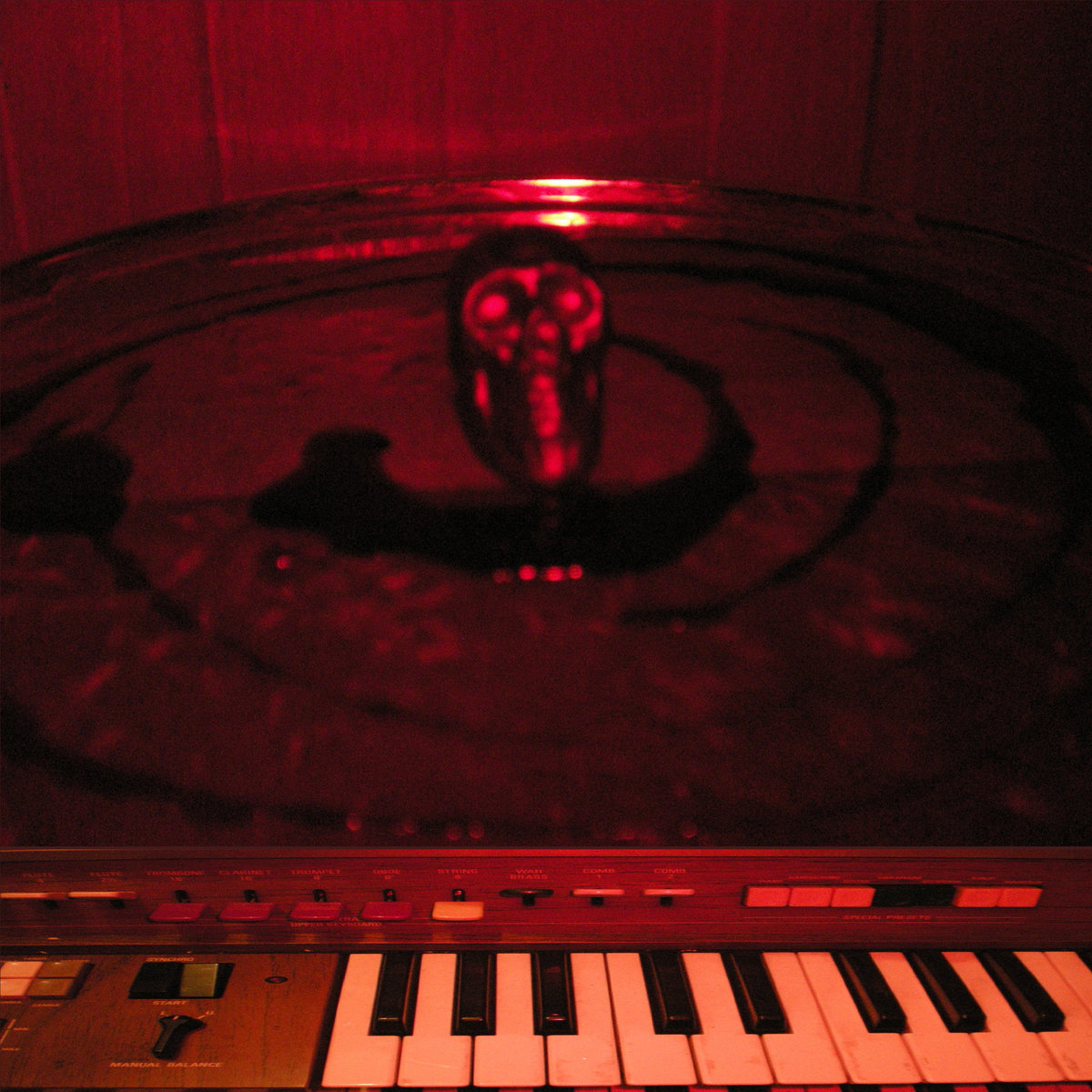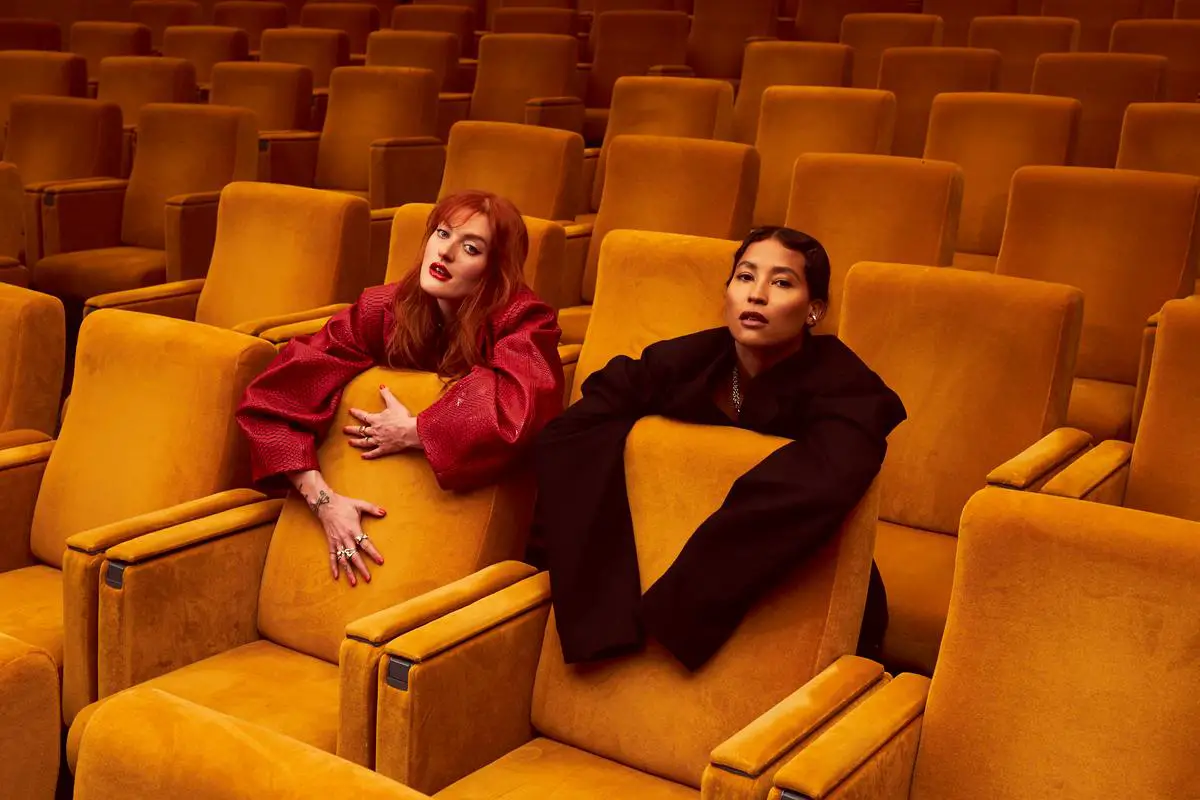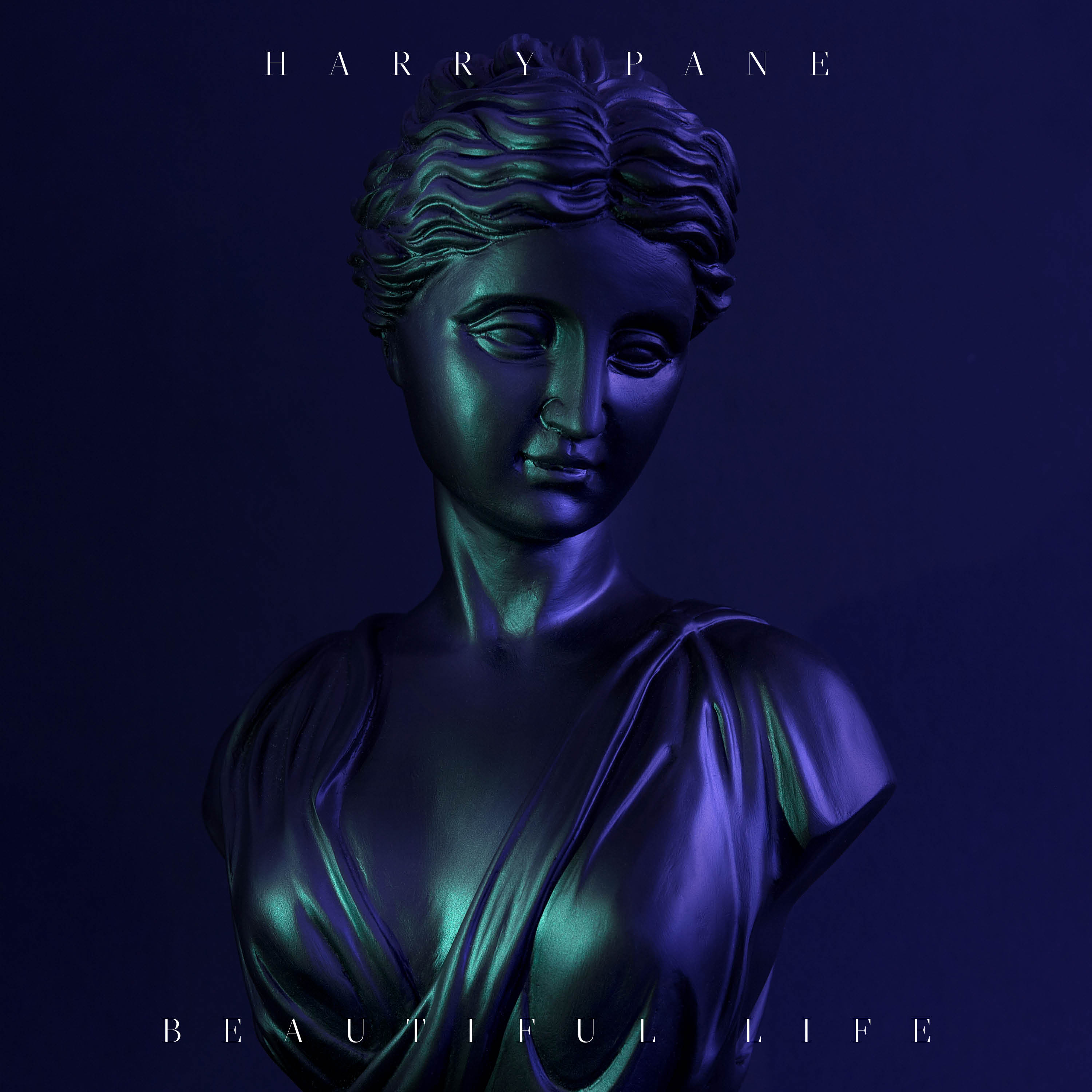Kalbells’ ‘Max Heart’ is like a Valentine’s Day gift to the universe – a heart-shaped box filled with chocolates you can’t even imagine the taste of.
Stream: ‘Max Heart’ – Kalbells
I think choosing each other as bandmates over and over again and making that commitment over and over to really be present and witness each other is incredibly powerful.
When I told Kalmia Traver, lead singer of Kalbells, that in my 2017 review of Ten Flowers I referred to her as “Disney’s runaway alien princess,” she laughed and said, “That’s a huge compliment.” Traver, a member of indie rock outfit Rubblebucket, debuted solo work that was ethereal and light with a depth at its core: when she made Ten Flowers, she was in recovery from ovarian cancer. It’s an album of healing and celebration in the most abstract way possible.

On Max Heart (out March 26, 2021 via NNA Tapes), Traver is still the runaway alien princess, but now she’s added a band of merry companions to the surreal fray – Sarah Pedinotti on bass and vocals, Angelica Bess on vocals, and Zoë Brecher on drums. What began as a solo project for Traver has blossomed into a tightly knit ecosystem of talented women, their music at turns feminine and sensual and funky and sweet and cheeky. Kalbells’ music does not sound like it’s from this plane of existence. When Max Heart begins, it’s with shimmering bell tones, like the sound you’d find in a video game when you go through a portal. This portal is an extension of the healing bubble found on Ten Flowers, and this time it’s through love and togetherness. Kalbells make esoteric and odd music – but they are unpretentiously weird, a distinction not often given to bands like this. Traver is so genuine that it bleeds through whatever she does. Max Heart is like a Valentine’s Day gift to the universe, a heart-shaped box filled with chocolates you can’t even imagine the taste of. Max Heart ends with the line, “Love me, hug me, max me out,” and there couldn’t be a more perfect encapsulation of Kalbells’ energy.
Atwood Magazine spoke to Traver about the healing nature of being in a band with other women, magical worlds, and the shape of love.
I keep coming back to my body as a planet or as a landscape and when I’m in the writing mode, I’m tapping into exploring it on these little visionary dream wanders.
— —
:: stream/purchase Max Heart here ::

A CONVERSATION WITH KALBELLS

Atwood Magazine: This began as a solo project. What was it like bringing bandmates into the process?
Kalmia Traver: I wasn’t really realizing that it was going to be necessary to play live shows when I started the recording project [laughs]. It kind of dawned on me, “Oh, right, we need to perform this music.” We’ve tried different formations, like tours where it was just a trio, and have had a few different rotating cast members over the past three or four years. Hiring women for me was very intentional. I really wanted to see what that would feel like because I was pretty much the only girl in most of my bands and live performance experiences. I also chose people where I knew that we had a foundation of love for each other and enjoyed being in spaces together, because so much of touring is about being together.
I’ve read that you said, “I think, there’s an unspoken thing that women don’t groove. That men groove and women are the singers and that our groove would be not viable or not as cool.” Could you expand on this?
Kalmia Traver: I feel more prepared to answer this question because I’ve been participating in this series of discussions for the past five months. We’re calling ourselves the Women’s Musicians Forum. It’s sensitive, of course, because I don’t want to pigeonhole women into any stereotype, but I guess I’m just acknowledging that feeling that I’ve had in my body for my whole career. The idea that “women are only the front person” comes from somewhere, and I think it’s been harmful. I’ve had to emerge out of so much self doubt, and that self doubt is kind of a cloud over my natural bright light of curiosity and inquisitiveness towards music. Those are things that we talk about a lot when we’re together as Kalbells — healing through creativity, witnessing each other, being together and really listening to each other. That seems so basic for musicians, of course we listen to each other, that’s just such a constant practice. But I think choosing each other as bandmates over and over again and making that commitment over and over to really be present and witness each other is incredibly powerful. I think it’s healing in a profoundly deep, cosmic, poetic way, because in this world where everybody’s kind of grappling for attention, it’s revealing that we all really, really want to be seen and heard. That’s a gift that we can give each other.
There’s a really interesting sense of femininity and sensuality in the video for “Purplepink.” Can you talk about this video’s conception?
Kalmia Traver: We were approached by Lisa Schatz for this video. She’s an incredible filmmaker and is actually making a documentary about a handful of women musicians in Brooklyn. I happen to be one of them. We had been getting to know each other while working on this project and I think we were both excited to work together in different ways. She was studying who we are as Kalbells and wanted to create a treatment for the video that would leave space for us to create individual characters in our own lexicon. It was definitely a collaboration, but she had the idea to have us be in outer space and to reference old Star Wars screen washes. A lot of those essences were hers and then she really wanted us to each come up with our own character. And so Sarah [Pedinotti], our bass player and one of our singers, had the idea that we would each invite one each of the four elements and so we rolled with that idea.
I’ve always been really interested in how your lyrics are so visual and concrete despite being so surreal. Can you talk about your philosophy of writing lyrics?
Kalmia Traver: I think that I’ve gotten more disciplined since starting Ten Flowers. That was the first time I did the song-a-day exercises that totally liberated me, because I was bad with discipline before that. It was like a constant argument in my own head like, “You should write. I don’t wanna write!” The song-a-day thing erased all of that. I started to discover that having that little box to scribble in each day was inviting this very dreamy, soul-wandering thing. I keep coming back to my body as a planet or as a landscape and when I’m in the writing mode, I’m tapping into exploring it on these little visionary dream wanders.
When you’re working on lyrics, does a metaphor come first or is it the language itself that’s taking you somewhere?
Kalmia Traver: I think it’s actually got a lot to do with sound, like utterances and mouth shapes. If I come up with a string of words, before I commit to them, I’m like, “How will that feel in my mouth and what’s the register I’ll sing it in?” It’s like a sculpture. Everything’s relating to everything else within the songwriting. As I’m going, I’m bouncing harmony off of imagery, etcetera, and it eventually emerges.
Do you find there are non-musical writers who have influenced your writing?
Kalmia Traver: I loved Roald Dahl and Dr Seuss as a kid. I was obsessed with these magical worlds. When I was really young, I wanted to write some science fiction or something. I remember every time we were doing free writes in elementary school, I would always go to a story of sailing over a sea and you land and you meet this alien and you walk down this road — I loved fantasy worlds like that. I’ve never really thought about it, so this is a great question. [laughs]

So often the instrumentation and production matches the physicality of the lyrics, like on “Flute Windows Open in the Rain” and “Bubbles.” Can you speak to how these ideas come together?
Kalmia Traver: It’s really joyful to do. Something that I was discovering before Ten Flowers is that I had been sort of commodifying myself as a writer and performer and thinking about what I needed to do for my career to go forward, thinking “I need new material.” I was the bad cop to myself around my own productivity, and then with Max Heart, I found that what I needed was totally the opposite. It was granting myself trust, like, “Anything that pops out is cool because it popped out of Kal, and Kal is cool, because I love myself [laughs].” It was like a mantra I had to keep coming back to because I was really still struggling with that self-love thing. It became so healing because I actually would really love the ideas and sounds that would flow out, and coming back to your question, the feeling of playing the flute in the room and just blowing air through the sax feels really good in the body.
Ten Flowers was very much an album of healing. If you had to sum up Max Heart in a word or concept, what would it be?
Kalmia Traver: It’s definitely an extension of the healing aspect of Ten Flowers. I think that it’s a flowering out of that element of healing and – I don’t know if this is going to make any sense, but sort of like a decentralizing. I wanted to take what I learned in Ten Flowers and keep practicing it as much as I possibly could, learning more and more about what healing relationships could look like. I had just been through a really painful relationship that was the total opposite of healing. I was scared to be in love again, but I also realized that in order to be in love, I needed to be practicing whatever shape I wanted a future romantic partnership to feel like. All the people around me were people that could practice this together, which includes the band, but also just all my friends and family. It was early on in the post-break up feeling where I made that commitment to start practicing the love shape again in my friendships and family relationships. I was just blown away at how quickly life started to feel not just good, but like really kind of euphoric and aligned and that’s the best way I can say what Max Heart means to me today.
It was early on in the post-break up feeling where I made that commitment to start practicing the love shape again in my friendships and family relationships.

Creativity has been so different for people over the past year. How did you find your creativity manifesting?
Kalmia Traver: I was stunned to find that I wasn’t really missing touring when I was noticing a lot of my friends posting about that. I was actually really thankful for a break. I think I had been a little bit oversaturated. For the first four months [of quarantine], I was alone in my apartment because my roommate had gotten stranded in LA. I was in New York City and there were so many ambulances and the direct fear of getting COVID and worrying so much about my neighbors.
I eventually remembered, “Oh yeah, I can make something right now and then that will make me feel better.” In that window of time I actually had to mix Max Heart. I was toying with hiring different mixers and then I thought, “I have all this time on my hands and I’ve got a pretty basic understanding of Logic and sound design, and I’ve been mixing all my own demos, so why don’t I take a stab at mixing Max Heart?” It took me forever. It took me that whole four months to do it. I just went really slow and it was beautiful.
Did you find yourself kind of forming a different relationship to the music being so inside of it from a mixing sense?
Kalmia Traver: Oh my gosh, yeah. It was so cool to have that much control, because I’d been applying all this creativity to the lyrics and the harmonies and melodies and then the arrangements. Then we had been in the studio, paying really close attention to how the grooves were translating literally onto tape, because we recorded onto tape. And then I did ten days of editing with Luke Temple, who helped with the album. Luke was the one who really encouraged me to mix it myself, and I think that I probably needed that push.
If you had to define your music, how would you do so? And not necessarily by genre, which can be so reductive.
Kalmia Traver: Learning about genres is a lifelong journey for me. It took me until I was fully in my 20s to really even realize that there’s a whole web of genres that really matters to people. One thing I can say at least about Max Heart is that I’ve always loved music that is danceable and that grooves. In the past few years building up to making Max Heart, I’ve been doing a more focused study of dance music through my roommate, who’s a producer and dance aficionado. We have this club right down the street called Nowadays that’s probably the coolest dance club in New York City. Wow, I am really avoiding this question. [laughs]
Ok, this is actually what it is: [our bassist] Sarah was visiting the city last year and we did one of our favorite things to do, which is smoke a joint and go on a walk. We figured out that we want to come out to the world as wanting to corner the queer jam market. So there you go, I just told the press. We’re out [laughs]. I think that’s an untapped part of society, so we want to hold it down.
What do you want people to take away from this record?
Kalmia Traver: I think that I always come back to that feeling of loving myself. I want people to feel more invited into their bodies and into the moment. That’s really what I want and I’m going to keep working. It’s a lifelong pursuit.
I want people to feel more invited into their bodies and into the moment.
— —
:: stream/purchase Max Heart here ::
— — — —

Connect to Kalbells on
Facebook, Twitter, Instagram
Discover new music on Atwood Magazine
? © Amanda Picotte
:: Stream Kalbells ::








